20 Chic Protective Hairstyles For Black Women
Protective hairstyles have become a staple in the hair care routines of many black women and for good reason. These hairstyles, characterized by low manipulation and reduced exposure to heat and chemicals, play a vital role in maintaining the health and versatility of black women's hair.
In essence, protective styles are hairstyles that shield the ends of the hair, minimizing damage and promoting growth. They involve techniques such as braiding, twisting, updos, wigs, and weaves, which not only safeguard the hair but also offer a wide range of styling options.
Protective hairstyles protect the hair from damage, offer styling versatility, and contribute to overall hair health. Embracing protective styles empowers black women to celebrate their natural beauty while maintaining strong and vibrant hair.
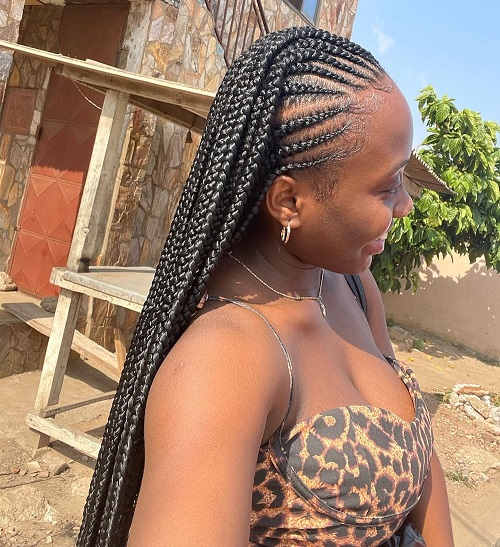
What is a protective style?
Protective styles are hairstyles specifically designed to shield and safeguard the hair, promoting its health and minimizing damage.
Popular examples of protective hairstyles include braids, twists, buns, updos, wigs, and weaves. Braids, such as box braids, cornrows, or micro braids, involve interweaving strands of hair to create a structured and protective pattern. Twists, like two-strand twists or Senegalese twists, involve twisting sections of hair together for a neat and protective style. Buns and updos, whether sleek or textured, gather the hair and secure it protectively, keeping the ends tucked away. Wigs and weaves offer a versatile and temporary option, allowing the natural hair to rest and remain protected. These styles not only protect the hair from external factors but also provide an opportunity for it to rest, retain moisture, and grow. Low manipulation and reduced exposure to heat and chemicals are keys in maintaining healthy and beautiful hair.
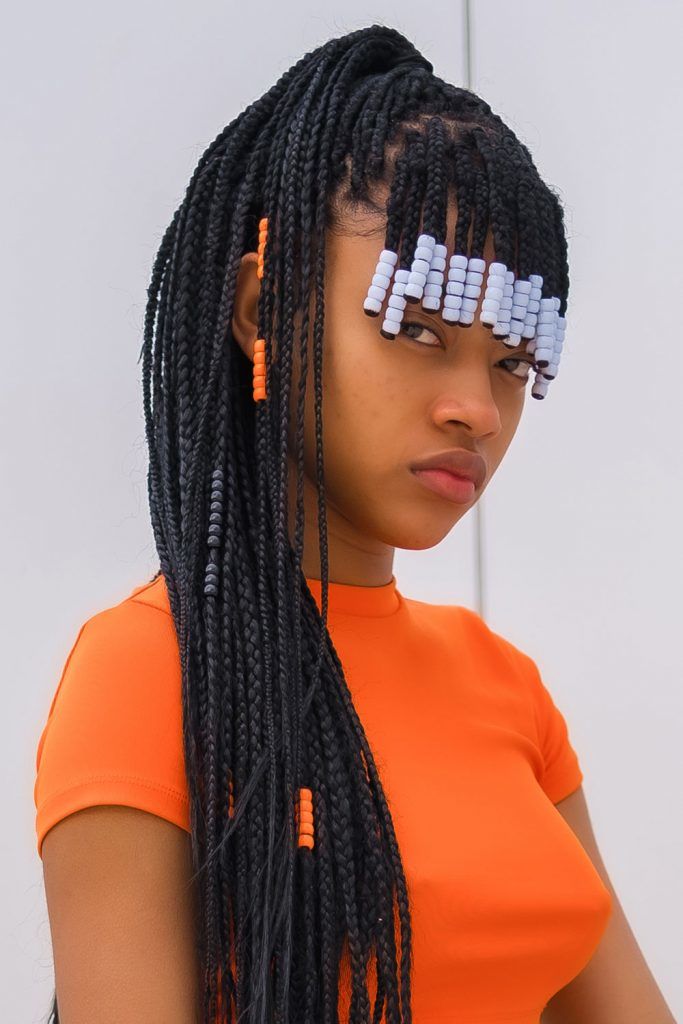
Benefits of protective hairstyles
Protective hairstyles offer numerous advantages that contribute to the overall health and beauty of black women's hair. Here are some key benefits:
- Promoting hair growth: Protective styles help foster hair growth by minimizing breakage. Since the ends of the hair are tucked away and protected, they are less prone to damage from friction, manipulation, and environmental factors. This promotes length retention and allows the hair to grow longer and healthier.
- Reducing breakage: Breakage is a common concern for black women due to the hair's delicate nature. Protective styles provide a shield that minimizes excessive manipulation and friction, reducing the risk of breakage. By keeping the hair secure and protected, these styles help maintain the hair's strength and integrity.
- Retaining moisture: Black hair tends to be drier compared to other hair types, making moisture retention crucial. Protective hairstyles help seal in moisture by keeping the hair tucked away and preventing excessive exposure to dry air and wind. This helps combat dryness and promotes healthier, more hydrated hair.
- Versatility and styling options: Protective styles offer a wide range of styling options, allowing for versatility and creativity. Whether it's braids, twists, buns, or wigs, there are countless variations and techniques to explore. These styles can be customized with different patterns, sizes, lengths, and even colors, giving individuals the freedom to express their unique style and personality.
- Low maintenance: Protective styles are often low maintenance, which is advantageous for busy individuals or those who prefer simplicity in their hair care routine. Once installed, these styles require minimal daily manipulation and can last for several weeks with proper care. This saves time and effort, allowing individuals to focus on other aspects of their lives while still maintaining stylish and healthy hair.
- Protection from external factors: Protective hairstyles act as a barrier, shielding the hair from external factors that can cause damage. They protect the ends of the hair from friction against clothing, pillows, and other surfaces. Additionally, they reduce exposure to heat-styling tools, such as flat irons and blow dryers, as well as harsh chemicals found in some hair products.
By embracing protective hairstyles, black women can experience the benefits of healthier hair, reduced breakage, enhanced moisture retention, and versatile styling options. These styles not only provide protection but also allow individuals to express their creativity and maintain their hair with minimal effort.
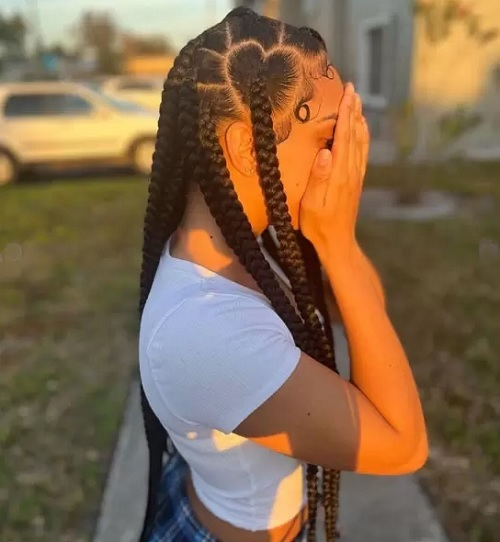
Tips for protective styling: How to prepare your natural hair?
Preparing your natural hair before installing a protective style is essential for ensuring its health and longevity. Here are some steps and recommendations to follow:
- Cleansing: Start by thoroughly cleansing your hair and scalp. Use a gentle sulfate-free shampoo or opt for co-washing (washing with a conditioner). This removes any product buildup, dirt, and excess oils, creating a clean foundation for your protective style.
- Moisturizing: Hydrating your hair is crucial before protective styling. Apply a deep conditioner or moisturizing mask to replenish moisture and improve the hair's elasticity. Leave it on for the recommended time to allow the hair to absorb the nourishing ingredients fully.
- Detangling: Gently detangle your hair using a wide-toothed comb or your fingers. Start from the end and work your way up to prevent excessive pulling and breakage. If your hair is prone to tangles, apply a detangling conditioner or use a leave-in conditioner for added slip.
- Scalp care: Pay attention to your scalp's health by massaging it with a lightweight oil or a scalp treatment. This stimulates blood circulation, promotes a healthy scalp environment, and prepares it for the protective style.
- Trim split ends: Before installing a protective style, consider trimming split ends. This helps prevent further damage and breakage, promoting healthier hair growth. If you're not confident in trimming your hair yourself, seek professional assistance.
- Allow your hair to dry: It's important to ensure that your hair is fully dry before installing a protective style. Excess moisture can lead to mildew or unpleasant odors, so make sure your hair is completely dry to avoid any potential issues.
Remember, each person's hair is unique, so adjust these steps based on your hair's specific needs. By following these preparation tips, you create a healthy foundation for your protective style, allowing it to last longer and protect your natural hair effectively.
20 Chic protective hairstyles for black women
1. Box Braids:
Classic and versatile, box braids offer a range of styling options. They can be worn long, medium, or short, and accessorized with beads, cuffs, or colored extensions.
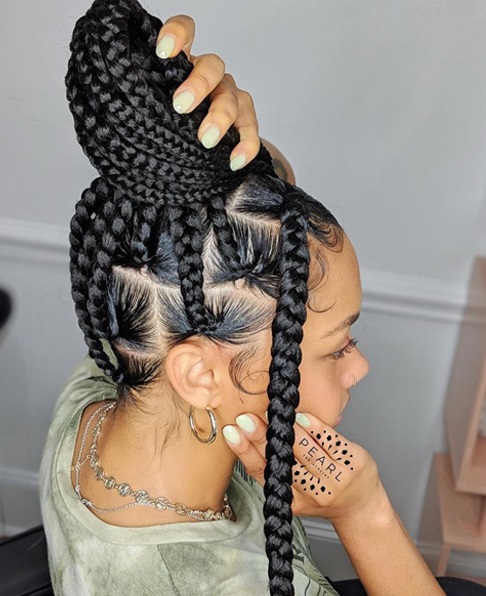
- Divide your hair into sections and secure them with hair clips.
- Take a small section of hair and divide it into three equal parts.
- Start braiding by crossing the right strand over the middle, then the left strand over the new middle strand.
- Continue braiding, adding more hair from the roots as you go.
- Braid to the ends and secure with a hair tie or wrap with hair extensions.
2. Senegalese Twists:
These rope-like twists are a popular choice for protective styling. They can be worn in various lengths and sizes, and adorned with accessories or styled into updos.
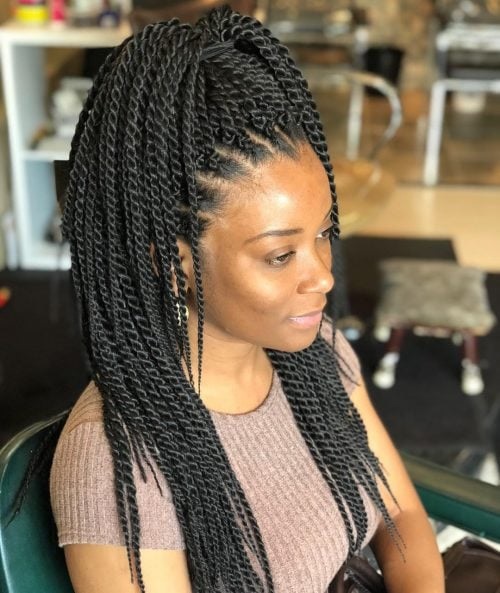
- Section your hair into smaller sections.
- Take two sections of hair and twist them together, continuing until you reach the ends.
- Use a twisting gel or cream to help smooth the hair and prevent frizz.
- Repeat this process throughout your head until all sections are twisted.
3. Faux Locs:
Achieve the look of dreadlocks without commitment. Faux locs can be installed using different methods, such as crochet or wrapping, and customized with various lengths and textures.
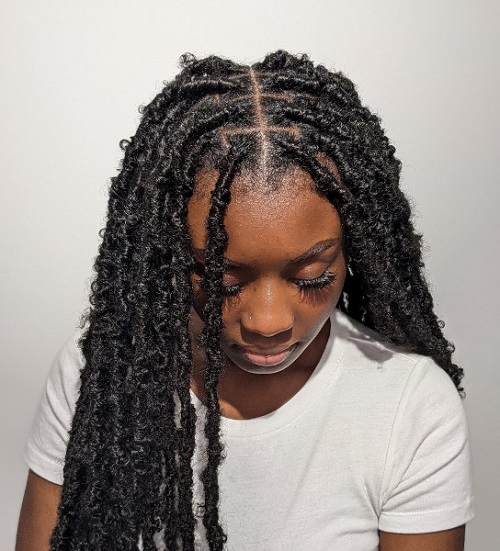
- Start by sectioning your hair.
- Wrap each section of hair with synthetic hair extensions, using the wrapping or crochet method.
- Twist or braid the wrapped hair from the roots to the ends.
- Use a latch hook or crochet needle to attach the wrapped hair to your natural hair.
4. Crochet Braids:
Crochet braids are quick to install and provide a wide range of style possibilities. From curly to straight, there are various hair textures available, allowing for versatile looks.
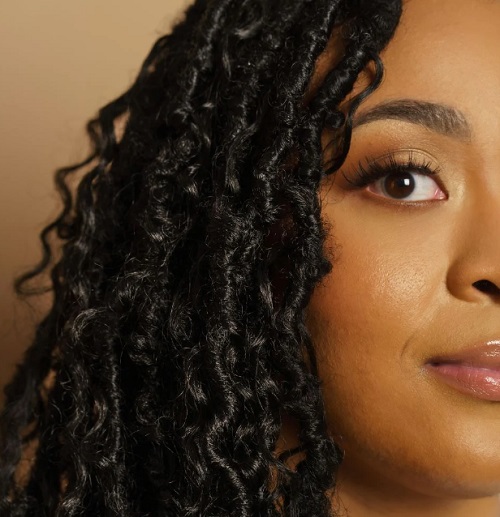
- Cornrow your hair in a desired pattern.
- Use a latch hook to loop the synthetic hair extensions through each cornrow.
- Once the extensions are looped through, secure them by tying a knot or using a crochet braid latch hook.
5. Cornrows:
Crochet braids are quick to install and provide a wide range of style possibilities. From curly to straight, there are various hair textures available, allowing for versatile looks.
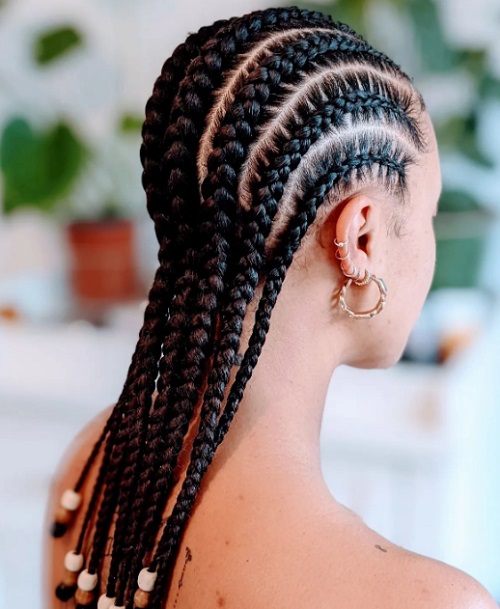
- Divide your hair into sections and create neat, tight braids close to the scalp.
- Start at the front and work your way back, incorporating additional hair as you go.
- Continue braiding until you reach the desired length or style.
6. Bantu Knots:
Bantu knots are small, coiled knots that can be worn as a standalone style or undone for gorgeous curls. They can be customized with different parting styles and decorated with accessories.
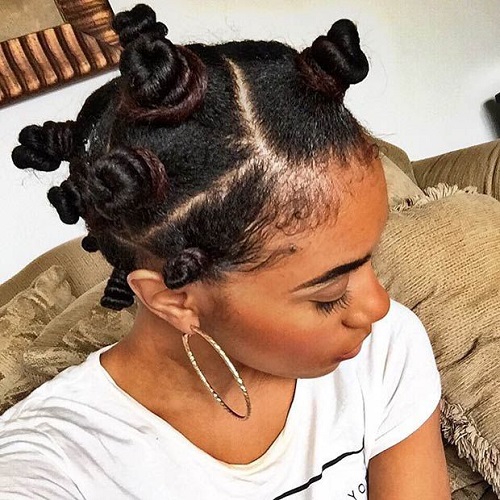
- Section your hair and apply a styling product for hold.
- Take a small section of hair and twist it tightly until it starts to coil on itself.
- Wrap the coiled section of hair around itself, forming a knot.
- Secure the knot with a bobby pin or hair tie.
- Repeat this process until all sections of hair are in knots.
7. Ghana Braids:
Also known as feed-in braids, Ghana braids involve adding extensions while braiding, creating a sleek and visually appealing style. They can be worn in various patterns and sizes.
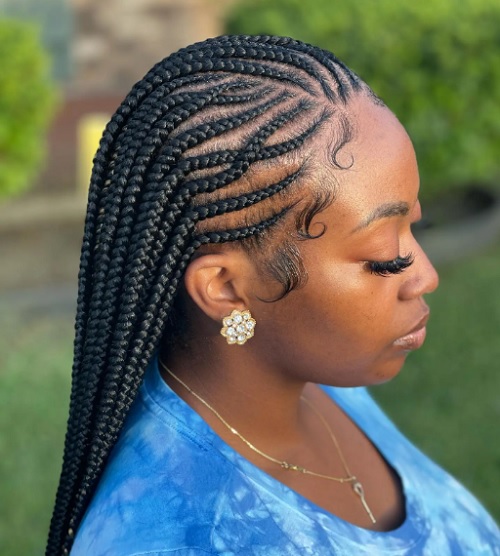
- Part your hair into desired sections and apply a styling product for hold.
- Start braiding each section, incorporating additional hair as you go.
- Continue braiding until you reach the desired length or style.
8. Halo Braid:
A halo braid is a crown-like braided updo that encircles the head. It offers an elegant and regal look, perfect for special occasions or everyday chicness.
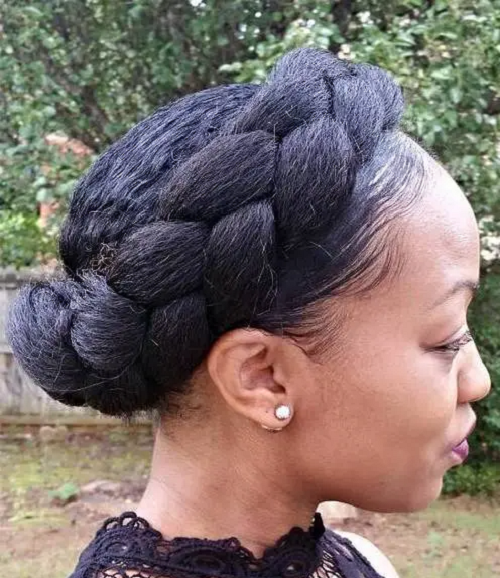
- Part your hair down the middle and divide it into two sections.
- Start braiding one side from the front, following the hairline toward the back.
- Repeat the same process on the other side.
- Once both sides are braided, wrap each braid around the head, securing them with bobby pins.
9. Fulani Braids:
Inspired by the Fulani tribe, this style features cornrows or braids with a middle part and added beads or cowrie shells for a cultural and stylish touch.
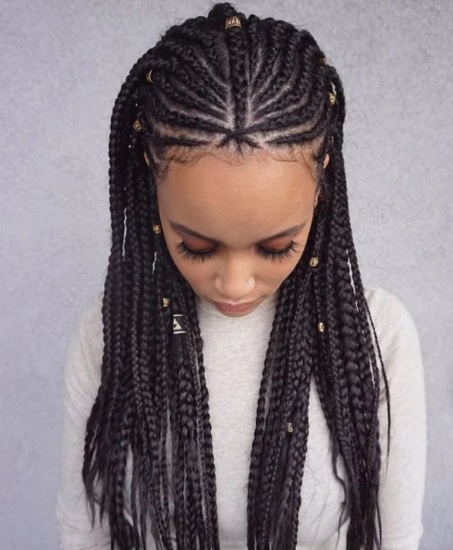
- Create a middle parting and section off a small section of hair.
- Create cornrows on the sides of the head, leaving the middle section free.
- Add extensions or beads to the cornrows for added style.
- Braid the middle section and incorporate the cornrows by weaving them into the braid.
10. Knotless braids:
These braids are similar to traditional box braids but are created without adding additional hair at the roots, resulting in a more natural and lightweight feel.
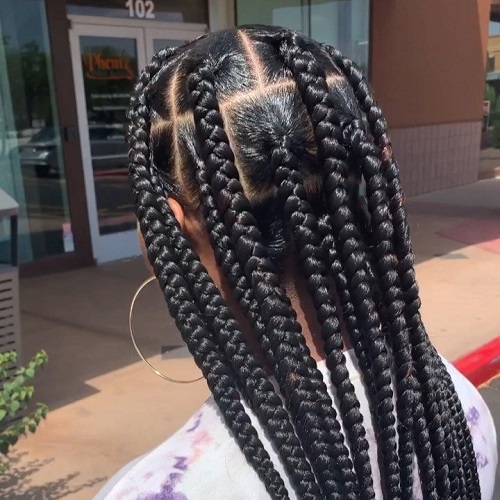
- Divide your hair into small sections and clip away the rest.
- Start braiding each section near the roots, incorporating hair from the section, and adding extensions as you go.
- Instead of using a traditional knot, braid the hair in a downward motion without securing it tightly.
- Continue braiding until you reach the desired length, leaving a small section of hair unbraided at the ends.
- Repeat this process for all sections, and seal the ends by dipping them in hot water or using a mousse or gel.
11. Protective Wig:
Wigs provide a quick and versatile way to protect your natural hair. From straight to curly, short to long, wigs offer endless options for changing your look while keeping your hair protected.
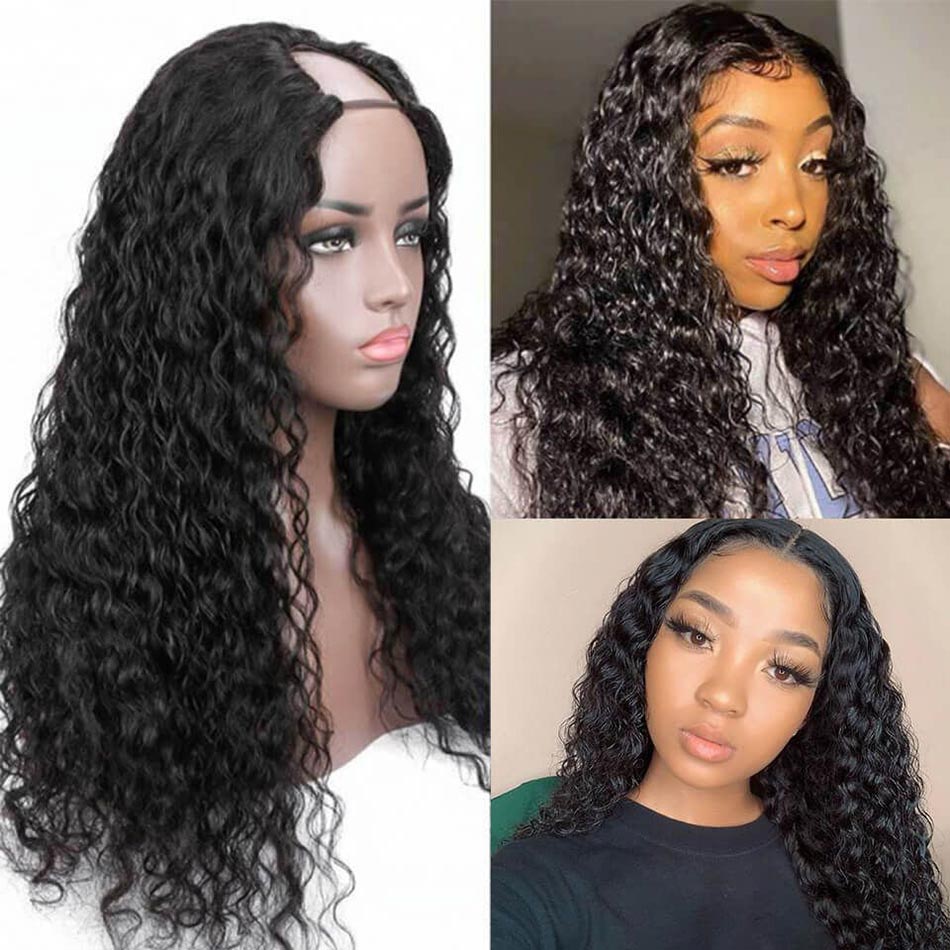
- Prepare your natural hair by braiding it or putting it in flat twists to create a smooth base.
- Put on a wig cap that matches your skin tone to secure your natural hair.
- Place the wig over the wig cap, adjusting it to fit comfortably and align with your natural hairline.
- Secure the wig with clips or combs attached to the wig's inner lining.
- Style the wig as desired, whether it's straightening, curling, or adding accessories.
12. Flat Twists:
Flat twists are a neat and stylish option for protecting natural hair. They can be worn as a full head of twists or combined with other styles like an updo or a ponytail.
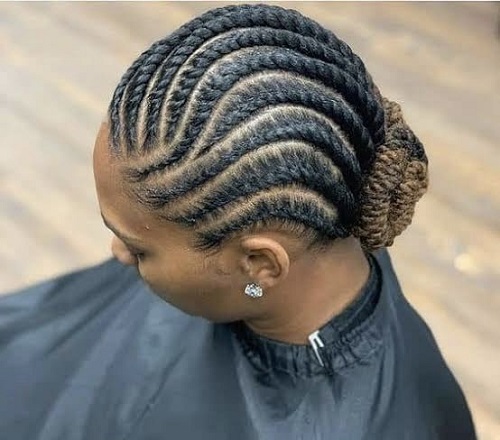
- Start with clean, moisturized hair.
- Divide your hair into sections and part the first section.
- Split the section into two equal parts and twist them around each other, starting at the roots.
- As you twist, add small sections of hair from the scalp to each twist.
- Continue twisting until you reach the ends and secure with a hair tie or bobby pin.
13. Jumbo Braids:
Jumbo braids are larger-sized braids that create a bold and statement-making look. They can be worn in various lengths and can be customized with colorful extensions or beads.
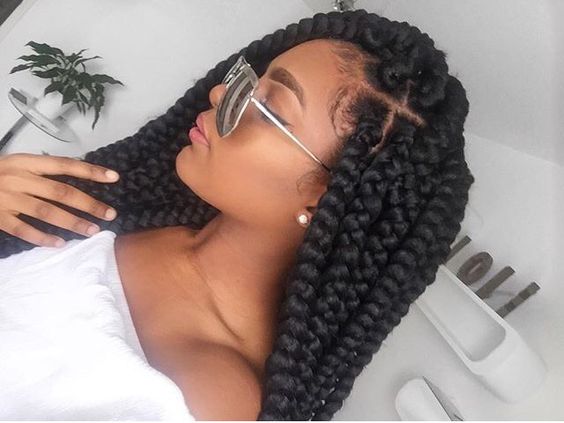
- Divide your hair into large sections.
- Take one section and divide it into three equal parts.
- Start braiding by crossing the right strand over the middle, then the left strand over the new middle strand.
- Braid to the ends and secure with a hair tie or wrap with jumbo-sized hair extensions.
14. Twist Out:
Twist outs involve creating twists in damp hair and unraveling them once dry, resulting in beautiful, defined curls. This versatile style can be worn in various lengths and sizes.
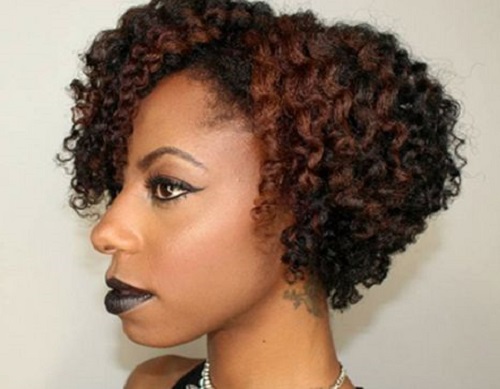
- Start with freshly washed and conditioned hair.
- Divide your hair into small sections.
- Apply a styling product, such as a twisting cream or gel, to each section.
- Twist each section from the roots to the ends.
- Allow the twists to air dry or use a hooded dryer.
- Once completely dry, unravel the twists to reveal defined curls.
15. Marley Twists:
Similar to Senegalese twists, Marley twists use Marley hair extensions for a thicker and more textured look.
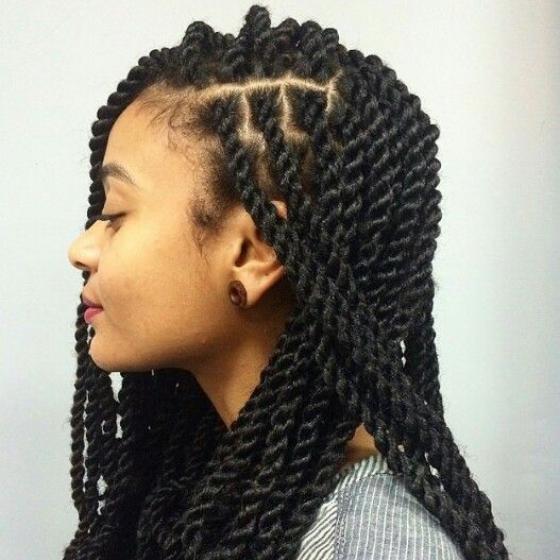
- Divide your hair into small sections and clip them away.
- Take a section of Marley hair, split it in half, and twist each half around your natural hair, starting at the roots.
- Continue twisting until you reach the ends, ensuring the twists are tight and secure.
- Repeat this process for each section until your entire head is twisted.
- Optionally, dip the ends in hot water to seal them or apply a small amount of gel or mousse to secure them.
16. Crown Braids:
Part your hair horizontally and braid the upper section into two or more braids, creating a crown-like effect.
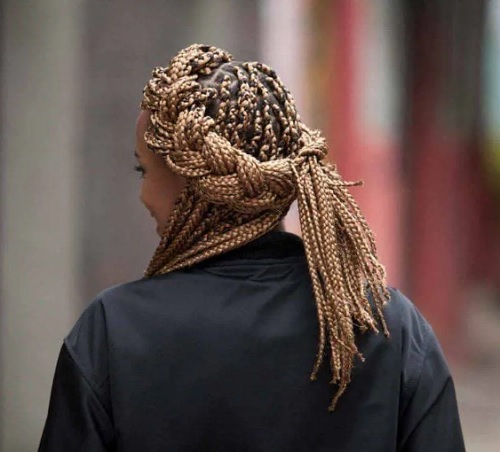
- Part your hair down the middle or on one side to create two sections.
- Take a small section of hair near the hairline and divide it into three equal parts.
- Start braiding by crossing the right strand over the middle, then the left strand over the new middle strand.
- As you braid, continue adding hair from the sides, incorporating it into the braid.
- Continue braiding until you reach the back of your head, securing the end with a hair tie or bobby pins.
- Repeat the process on the other side.
- Take the braids and wrap them around the back of your head, securing them with bobby pins to create a crown-like effect.
17. Halo Braid with Beads:
Add beads or shells to a halo braid for a touch of personality and cultural flair. The beads can be coordinated with outfits or chosen for their aesthetic appeal.
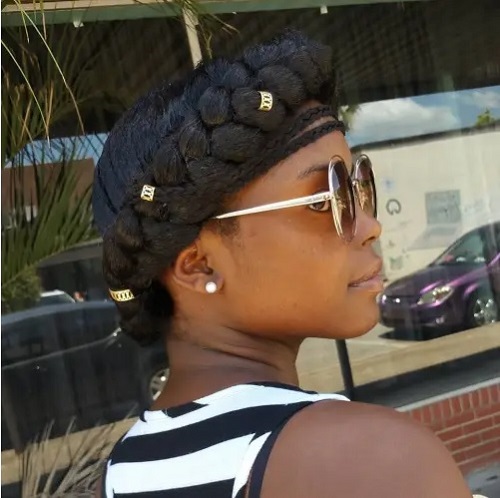
- Create a middle parting and section off a small section of hair.
- Braid each side, following the hairline toward the back.
- Once both braids meet at the back, continue braiding them together.
- Add beads along the length of the braids for decoration and style.
- Secure the ends of the braids with hair ties or beads.
18. Goddess Braids:
Goddess braids are large, intricate braids that can be styled in various patterns, such as updos or half-up styles. They offer a regal and goddess-like appearance.
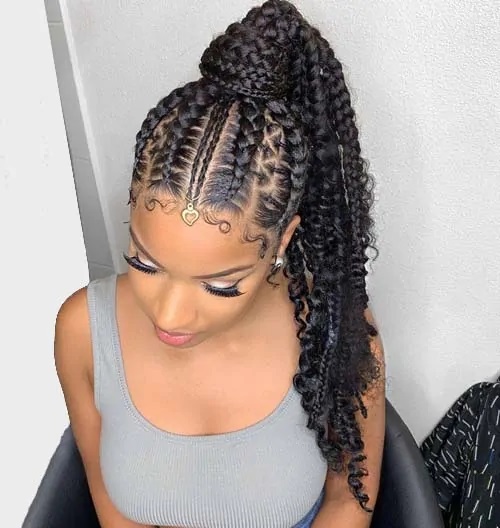
- Part your hair into sections and secure each section with hair clips.
- Start braiding from the front, incorporating more hair as you move toward the back.
- Braid tightly and close to the scalp, creating large, intricate braids.
- Secure the ends with hair ties or wrap them with hair extensions for a finished look.
19. Faux Hawk:
Create a bold and edgy look with a faux hawk. This style involves braiding or twisting the sides of the hair while leaving the center section loose or styled into a ponytail or bun.
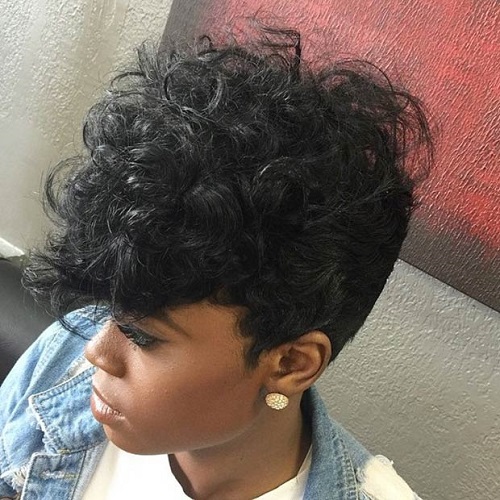
- Section off the hair on the sides, leaving the center section free.
- Braid or twist the side sections towards the center, securing them with bobby pins or hair ties.
- Leave the center section loose or style it into a ponytail, bun, or twist for added flair.
20. Mohawk with Cornrows:
Combine cornrows with a braided or twisted mohawk for a unique and eye-catching protective style. The cornrows provide a sleek and stylish contrast to the textured center section.
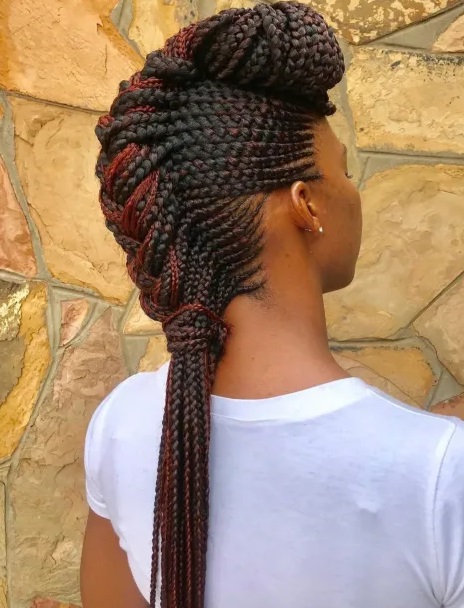
- Create cornrows on the sides of the head, leaving the center section free.
- Braid or twist the center section, securing it with bobby pins or hair ties.
- Style the cornrows in various patterns or add accessories for a unique touch.
Remember to take breaks between protective styles to allow your hair to rest and breathe. Proper maintenance and regular moisturizing are essential for maintaining the health and integrity of your natural hair.
How to maintain protective styles?
Once you've installed a protective style, it's important to maintain it properly to ensure its longevity and keep your hair healthy. Here is a guide on how to care for and maintain your protective styles:
Tip 1: Moisturize regularly: Although your hair is tucked away, it still needs moisture. Use a lightweight moisturizing spray or leave-in conditioner to hydrate your hair and scalp. Focus on the roots and massage the product with your fingertips.
Tip 2: Oil your scalp: Dilute a small amount of light oil with water, such as coconut oil, jojoba oil, or argan oil. Apply the diluent to your scalp to keep it moisturized and prevent dryness. Use an applicator bottle or your fingertips to apply the oil directly to your scalp, focusing on the exposed areas.
Tip 3: Cleanse your scalp: Keep your scalp clean and free from buildup by using a diluted shampoo or a cleansing spray. Gently massage the cleanser onto your scalp, being careful not to disturb the style. Rinse thoroughly and follow up with a moisturizing conditioner.
Tip 4: Protect your hair at night: Cover your hair with a satin or silk scarf, or use a satin bonnet or pillowcase when you sleep. These materials help to retain moisture and prevent friction, preserving the style and reducing frizz.
Tip 5: Minimize manipulation: Avoid excessive touching, pulling, or styling of your protective style. Frequent manipulation can lead to frizz and premature unraveling. Instead, embrace the low-maintenance nature of protective styles and let them be.
Tip 6: Avoid excessive heat: Heat can compromise the integrity of your protective style. Minimize the use of hot tools like flat irons, curling irons, and blow dryers. If you need to apply heat, use a heat protectant spray and keep the temperature as low as possible.
Tip 7: Protect from harsh weather: Shield your hair from harsh weather conditions, such as extreme sun, wind, and humidity, as they can cause frizz and damage. Wear a hat or use a scarf to protect your hair when outdoors, especially during prolonged sun exposure.
Tip 8: Address itchy scalp: If you experience an itchy scalp while wearing a protective style, use a soothing scalp treatment or oil to alleviate discomfort. Avoid scratching or excessive rubbing, as it can disturb the style and irritate the scalp.
Tip 9: Touch-up and refresh: As your protective style matures, you may notice some frizz or loose strands. Take the time to gently re-tuck or re-braid any loose or frizzy sections to maintain a neat appearance.
Tip 10: Stay hydrated and eat a balanced diet: Hydrating your body and consuming a nutrient-rich diet contribute to overall hair health. Drink plenty of water and eat foods rich in vitamins, minerals, and proteins to promote strong and vibrant hair growth.
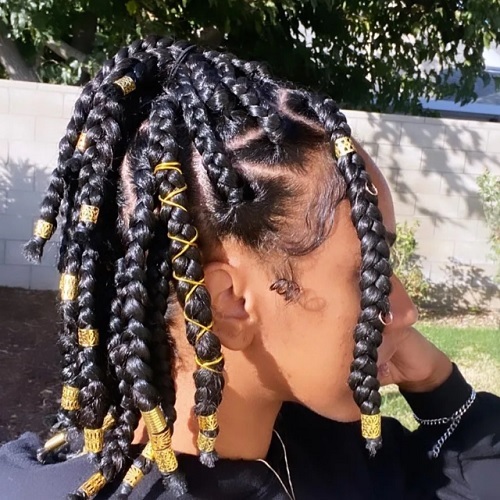
Recommended Products for Moisturizing the Hair and Scalp:
- Lightweight moisturizing spray or leave-in conditioner
- Natural oils (coconut oil, jojoba oil, argan oil)
- Scalp cleanser or cleansing spray for protective styles
- Soothing scalp treatment or oil
Tips for Preserving the Style's Longevity and Minimizing Frizz:
- Avoid excessive touching, pulling, or styling.
- Use satin or silk scarves, bonnets, or pillowcases for sleeping.
- Minimize heat usage and apply heat protectant if necessary.
- Protect hair from harsh weather conditions.
- Address an itchy scalp with soothing treatments or oils.
- Gently touch up and refresh the style as needed.
- Stay hydrated and maintain a balanced diet for overall hair health.
By following these maintenance tips, you can prolong the life of your protective style and keep your hair in optimal condition. Remember, regular care and attention will ensure that your hair remains healthy and beautiful throughout your protective style.
Conclusion:
Protective hairstyles for black women offer numerous benefits and endless versatility. They promote hair growth, reduce breakage, and retain moisture. It's important to experiment with different styles to find what suits your preferences and hair type best.
While protective styles provide excellent hair protection, regular care is still crucial. Maintain a consistent moisturizing routine, cleanse your scalp, and protect your hair from harsh chemicals and excessive heat. Seek professional assistance when needed to ensure optimal hair health.
Explore the world of high-quality human hair wigs and hairs. Elfin Hair offers a wide range of options to protect your natural hair and add length and volume to achieve various protective hairstyles.
In summary, embrace the versatility of protective hairstyles, express your style, and prioritize regular hair care. Protect and celebrate your natural beauty through the beauty and benefits of protective styles.
 40%
40%
OFF Sale-
$165.83
$276.94(512) (424)
 40%
40%
OFF Sale-
$165.83
$276.94(514) (406)
 40%
40%
OFF Sale-
$161.83
$270.26(523) (396)
 40%
40%
OFF Sale-
$155.83
$260.24(524) (478)
 40%
40%
OFF Sale-
$83.29
$139.09(563) (373)
 40%
40%
OFF Sale-
$102.01
$170.36(658) (491)
 40%
40%
OFF Sale-
$73.46
$122.68(997) (545)
 40%
40%
OFF Sale-
$167.12
$279.09(530) (471)
Related Posts:
Deep Wave Wig Styles You Shouldn't Miss
10 Straight Frontal Wig Styles You Must Try In 2023
Rocking Drawstring Ponytails: Hairstyles, Cares, and FAQs
20 Must-Try Simple Cornrow Hairstyles 2023

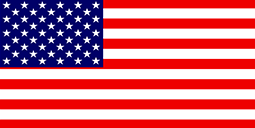 USD
USD EUR
EUR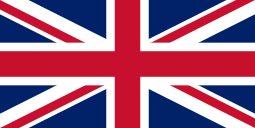 GBP
GBP CAD
CAD AUD
AUD


















